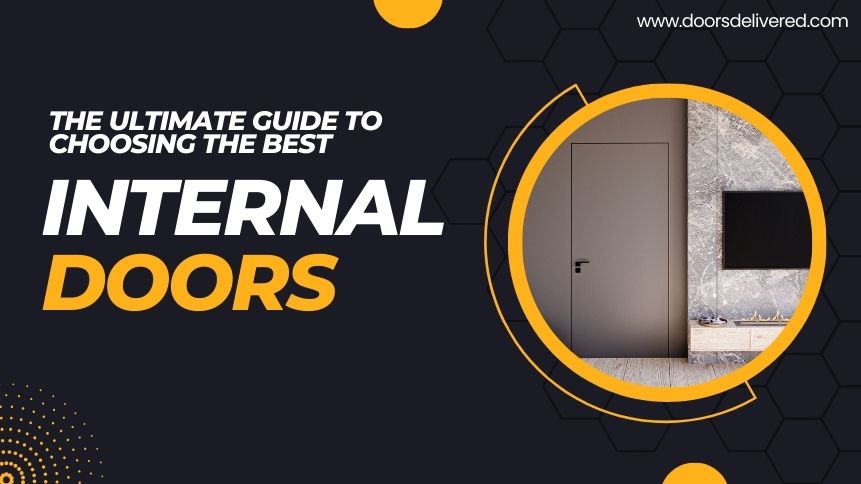Welcome to our comprehensive ultimate guide to choosing the Best . In this comprehensive guide, we will take you through everything you need to know about selecting the perfect internal doors for your home. Whether you are renovating, building a new home, or simply looking to upgrade your current doors, this guide will provide you with the knowledge and insights to make the right informed decisions.
Get ready to enhance the look, functionality, and overall value of your space with the right internal doors.
Enhance Your Home with the Perfect Internal Doors: A Complete Buying Guide
When it comes to selecting internal doors, there are several factors to consider. Here, we will discuss the importance of choosing the right doors and how they can enhance your home. We will explore the different types of internal doors, their benefits, and the key factors to keep in mind during the buying process.
Accurate Measuring for Seamless Door Installations: Tips and Tricks
Measuring your space correctly is crucial for a seamless door installation. In this chapter, we will share essential tips and tricks to ensure accurate measurements. From measuring the rough opening to determining the right door size, you’ll learn the techniques to achieve a perfect fit.
Elevate Your Interiors with High-Quality Materials: Choosing the Perfect Internal Door
The material of your internal doors plays a significant role in both aesthetics and durability. This chapter will explore the various materials available, such as wood, fiberglass, and composite. We will examine their qualities, advantages, and which ones are suitable for different areas of your home.
Stay on Trend with the Latest Styles and Designs: A Look at Internal Door Options
Stay ahead of the interior design game by exploring the latest styles and designs in internal doors. From classic to contemporary, we will showcase trending options that can elevate the overall look of your space. Discover doors that suit different architectural styles and reflect your personal taste.
Simplify Your Project with Pre-Finished Doors: Convenience and Style Combined
If you’re looking for convenience and style, pre-finished doors might be the perfect choice. This chapter will delve into the benefits of pre-finished doors and guide you through the selection process. Discover how these doors can save you time, effort, and add a touch of elegance to your home.
Safety First: Ensuring Protection with Fire-Rated Internal Doors
Safety should never be compromised when it comes to your home. This chapter will highlight the importance of fire-rated internal doors and how they provide vital protection in case of emergencies. Learn about different fire ratings, industry standards, and choose the right fire-rated doors to secure your home.
Master the Installation Process: A Step-by-Step Guide to Installing Internal Doors
Installing internal doors can seem daunting, but with the right guidance, it can be a straightforward process. In this chapter, we will provide a step-by-step guide to help you through the installation. From preparing the door frame to attaching hinges and handles, you’ll become a pro in no time.
Longevity and Functionality: Maintaining the Look and Performance of Internal Doors
To ensure your internal doors retain their beauty and functionality for years to come, proper maintenance is essential. This chapter will outline the best practices for caring and maintaining your doors. Learn how to clean, polish, and address common issues to extend the lifespan of your internal doors.
Adding the Finishing Touches: Door Accessories to Enhance Your Space
Complete your internal door project with the right accessories. In this chapter, we’ll explore different door hardware options, such as handles, hinges, and locks. Discover how these accessories can not only improve functionality but also add style and personality to your space.
Real-Life Transformations: Case Studies of Stunning Internal Door Installations
Inspiration can go a long way when it comes to making decisions. In this final chapter, we will showcase real-life case studies of stunning internal door installations. Explore these transformations to see how different door choices and installations have truly elevated homes, providing ideas for your own project.
Now that you have a comprehensive understanding of choosing the best internal doors, it’s time to put your knowledge into action. We hope this guide has provided you with valuable insights and equipped you with the information needed to make informed decisions. Share your thoughts, ask questions, or provide feedback by leaving a quick comment below. Your engagement is highly appreciated!
Remember, at Doors Delivered, we are dedicated to helping you find the perfect internal doors that will enhance your home and create a welcoming and stylish environment. Visit our website at https://doorsdelivered.com/ to explore our wide selection of high-quality internal doors.
and can be painted or varnished to match the rest of your interior. They’re also very easy to install, so if you’re looking for a quick and easy solution then this may be the type of internal door for you.
However, solid core doors are not ideal for rooms with high levels of moisture or humidity as they’re not moisture resistant. If you have a damp bathroom or kitchen then this may not be the best choice.
The Ultimate Guide To Choosing the Best Internal Doors
Not all internal doors are created equal. In fact, there are many different types of internal doors on the market, each with its own unique qualities and benefits. Choosing the right one is essential if you want that first impression of your home to be a good one.
So we’ve put together this exclusive guide to help you decide what type of internal door would suit your needs best.
Exploring the best material choices
Internal doors can be made from a variety of materials, each with its own unique characteristics and benefits. When choosing a material for internal doors, it’s important to consider factors such as budget, style, and practicality.
Most internal doors are made of a combination of materials, but the most common materials used are:
- Wood: Solid wood doors are popular for their classic and natural look. They can be made from various types of wood, such as oak, pine, mahogany, or maple.
- Hollow Core: These doors have a wooden frame and a honeycomb-like core, usually made from cardboard or synthetic materials. They are lightweight and affordable.
- Solid Core: Solid core doors have a solid wood or composite core, making them heavier and more durable than hollow core doors.
- MDF (Medium-Density Fibreboard): MDF doors are made from compressed wood fibers and offer a smooth surface that is easy to paint.
- Glass: Some internal doors have glass panels, which can be frosted, clear, or decorative, adding a touch of elegance and allowing light to pass through.
- Composite: Composite doors combine different materials, often featuring a wood frame with a fibreboard or foam core, covered with a synthetic skin.
When comparing the different materials used for internal doors, each option has its pros and cons:
1. Wood:
– Recommended for: Traditional and classic aesthetics, as well as those seeking a natural look and feel.
– Pros: Elegant appearance, excellent insulation properties, and durability.
– Cons: Can be expensive, prone to warping and expanding in humid environments.
2. Hollow Core:
– Recommended for: Those on a budget or looking for lightweight doors for standard interior use.
– Pros: Cost-effective, easy to install due to their lightweight nature.
– Cons: Less Soundproofing and insulation, less durability compared to solid core doors.
3. Solid Core:
– Recommended for: Those who want more sturdiness and soundproofing than hollow core doors offer.
– Pros: Better sound insulation, more durable and resistant to damage than hollow core doors.
– Cons: Heavier than hollow core doors, which might make installation more challenging.
4. MDF (Medium-Density Fibreboard):
– Recommended for: Those who prefer a smooth surface that can be easily painted or finished.
– Pros: Affordable, resists warping, and has a consistent surface for paint applications.
– Cons: Not as durable as solid wood doors, and moisture can damage the material.
5. Glazed:
– Recommended for: Spaces where light transmission and an open feel are desired, like in interior offices or to connect rooms visually.
– Pros: Allows light to pass through, adds a sense of openness and style.
– Cons: Less privacy and insulation, may require frequent cleaning to maintain transparency.
6. Composite:
– Recommended for: Those seeking a balance between affordability, durability, and various design options.
– Pros: Combines the benefits of different materials, customizable, and can mimic the appearance of wood.
– Cons: Quality can vary depending on the specific composite material used.
The most optimal material option for internal doors depends on your individual needs, preferences, and budget. In general, solid wood and solid core doors offer excellent performance and aesthetics, making them a recommended choice for most interior applications. However, if budget constraints are a concern, hollow core or MDF doors can be more cost-effective alternatives while still serving their purpose well. Ultimately, it’s crucial to consider factors like style, functionality, and the specific location where the door will be installed when making a decision.
Discovering the Perfect Match: Exploring Different Styles of Internal Doors
When it comes to choosing the right size and style of internal doors, there are a few things to consider. First, think about the purpose of the room. A bedroom door should provide privacy and sound insulation, while a kitchen door should be easy to open and close with your hands full. Second, consider the size of the room. A large room may benefit from double doors or a sliding door, while a small room may require a space-saving pocket door. Finally, think about the overall aesthetic of your home. Your doors should complement the style of your home and add to its overall beauty and value.
Due to the diversity in door materials, a wide range of door styles has emerged, each tailored to serve different purposes and accommodate various needs and preferences. In this section, we’ll dive into the most popular styles of internal doors:
Panel Doors: Looking for a classic and timeless option?
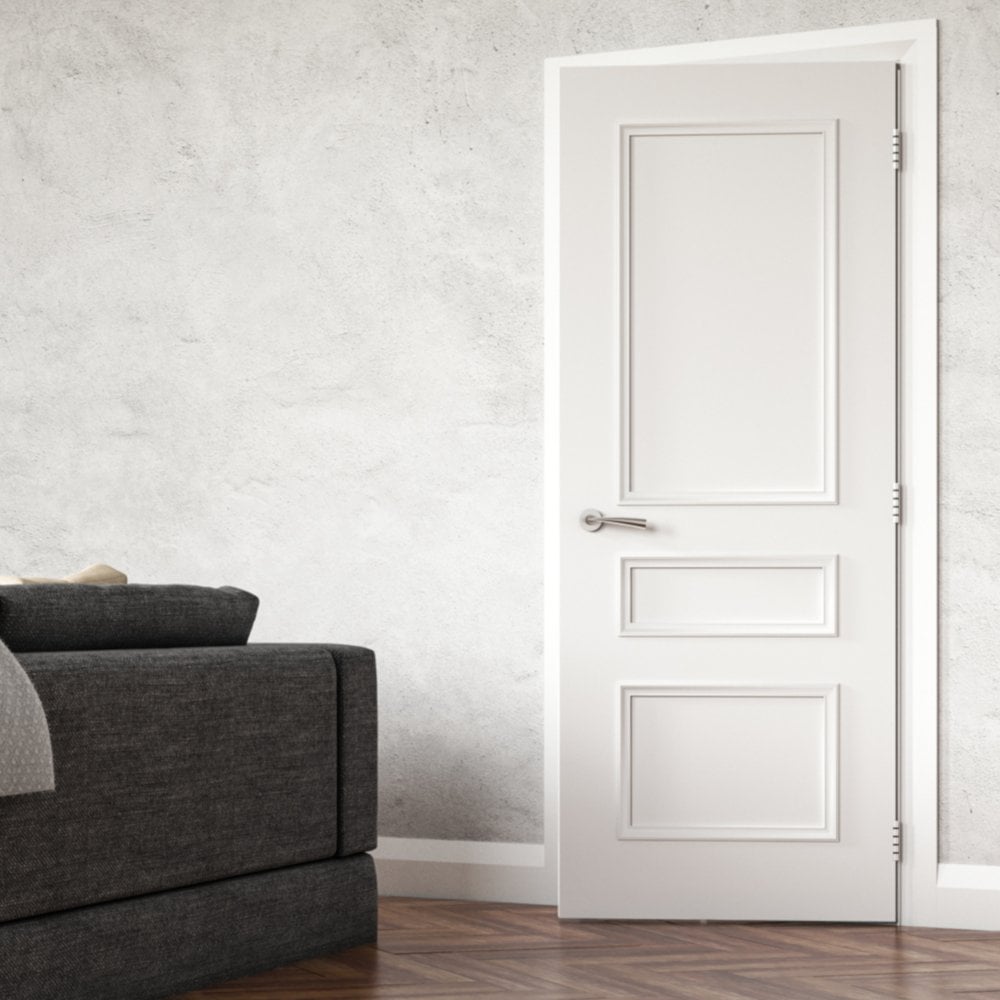
French Doors: want to create an elegant and light-filled atmosphere?
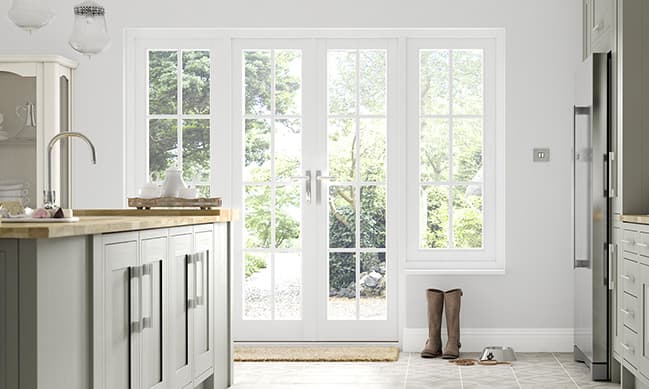
Flush Internal doors – Elevate Your Interiors
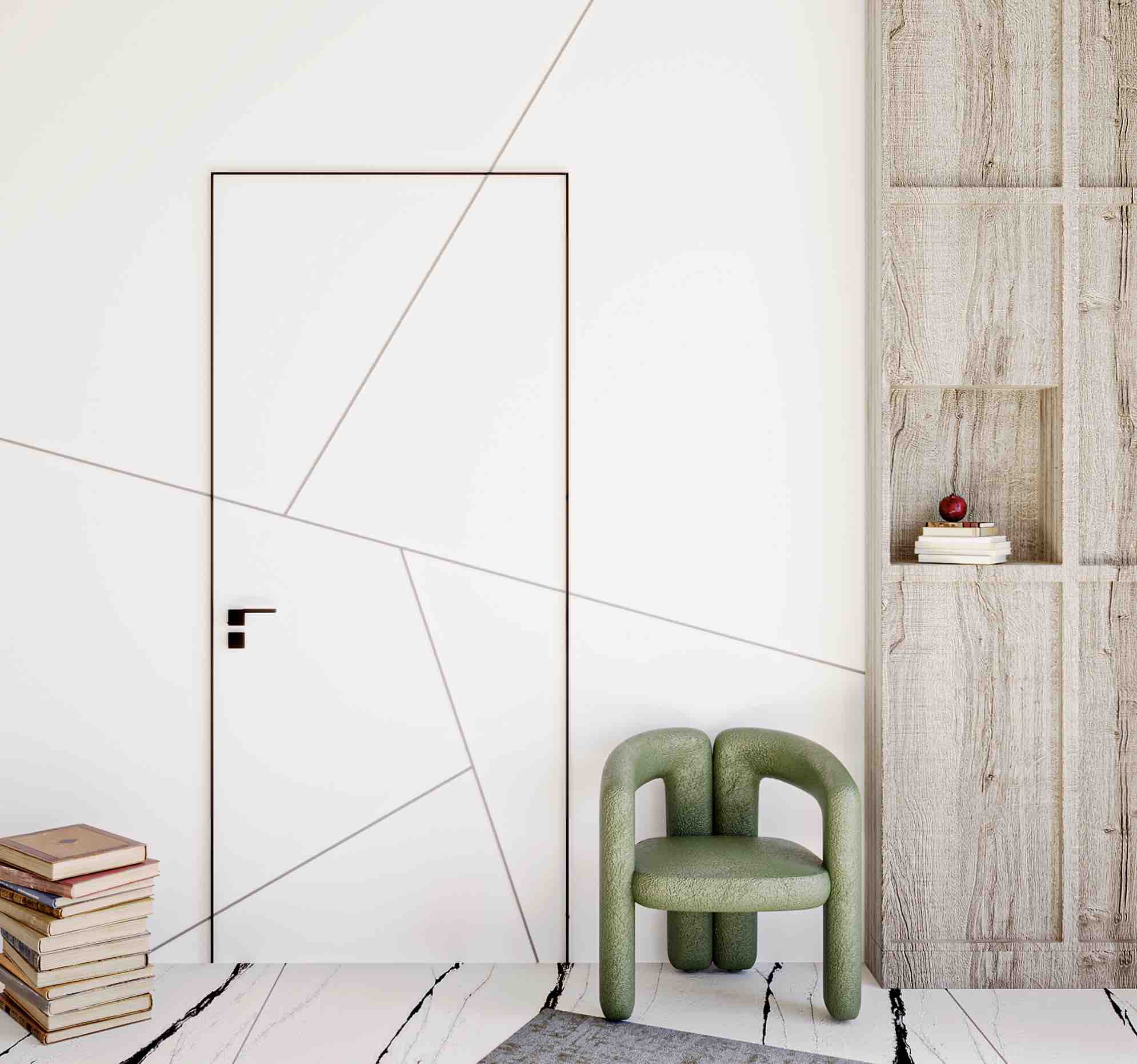
Flush internal doors are a type of interior door that is characterised by its flat, smooth surface on both sides, with no raised or recessed panels. These doors are designed to blend seamlessly with the surrounding walls, creating a sleek and modern appearance. Flush doors are popular in contemporary and minimalist interior designs, where simplicity and clean lines are emphasised.
Flush internal doors offer a minimalist and unobtrusive look, making them an excellent choice for modern and contemporary interiors. Their versatility and simple design allow them to complement various architectural styles while maintaining a seamless and sophisticated appearance.
Folding and Bi-Fold Doors are these right for you?
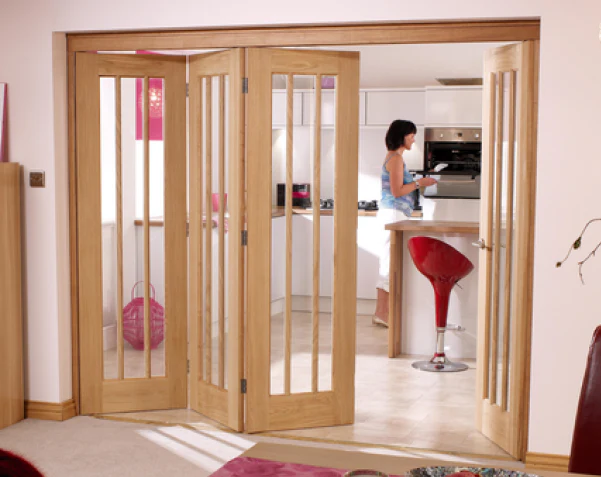
Folding and bi-fold doors are a great option if you want to maximise the space in your home. They can be installed on an external wall, so they’re perfect if you have limited space around your property. These doors are also easy to clean, as they can simply be folded away when not in use and stacked neatly against each other when open.
The main benefit of these kinds of doors is that they take up less space than traditional ones do when opened or closed – this makes them ideal for smaller rooms where there isn’t much room for furniture! However, folding/bi-folding doors aren’t recommended for bathrooms (due to moisture issues) or kitchens (because they don’t offer any insulation from heat).
Sliding Internal Doors: Need to save space and maintain a sleek appearance?
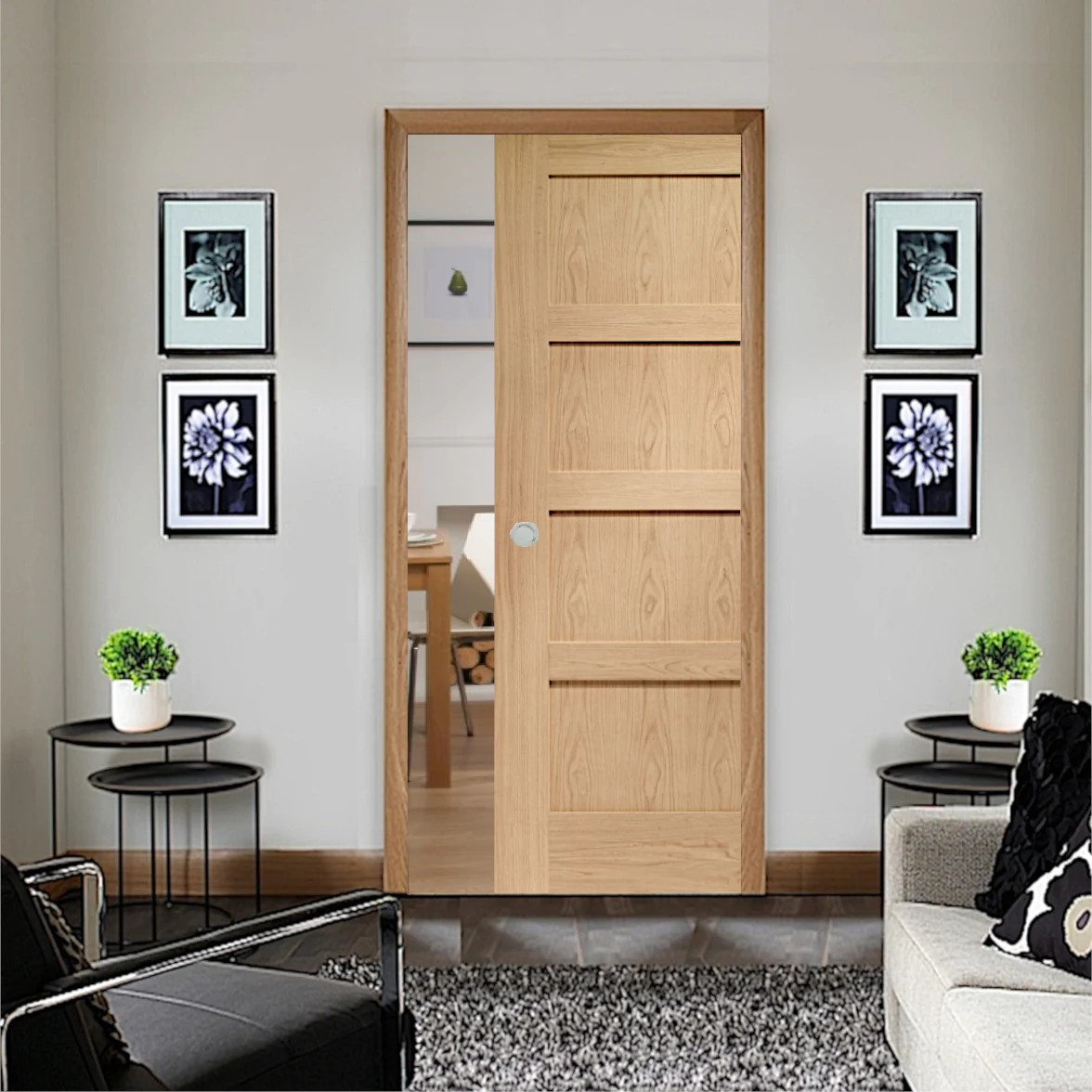
Fire Doors – when should you use them in your home?
Fire doors are required mainly in flats, Properties with Loft Conversions as well as When renovating or refurbishing a building, fire doors may need to be installed or upgraded to meet current fire safety standards. Fire doors are often made from wood and can be used as an interior or exterior door. The purpose of a fire door is to prevent the spread of fire from room to room, which makes them an important part of any building’s security measures.
Fire doors come in different styles and materials; they can be single-leaf or double-leaf (both sides open), hinged at top or bottom swing into or away from the room being protected etc… so there’s no one type that fits every situation!
